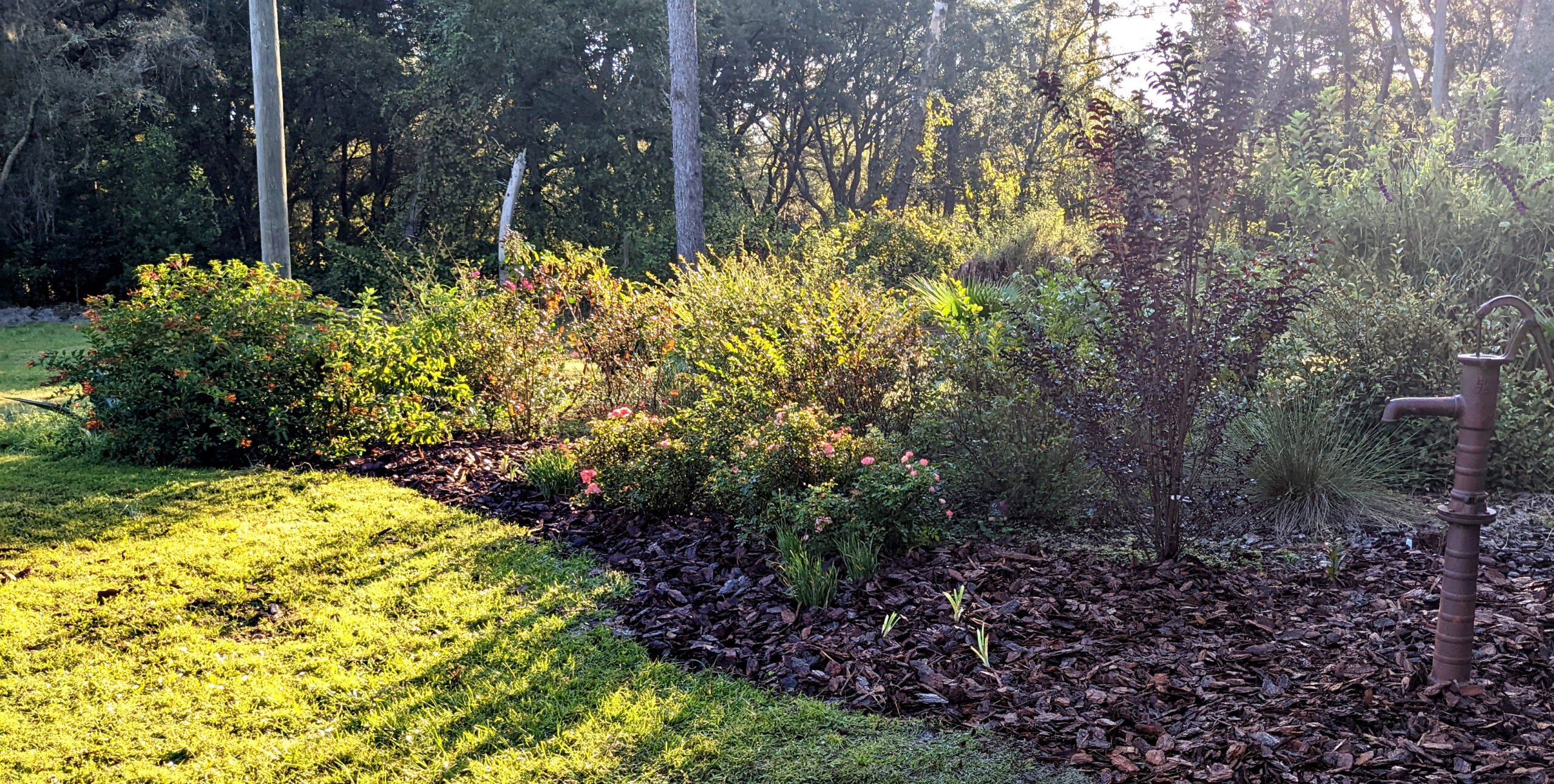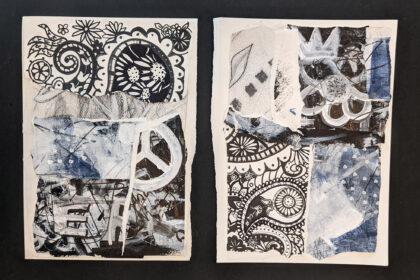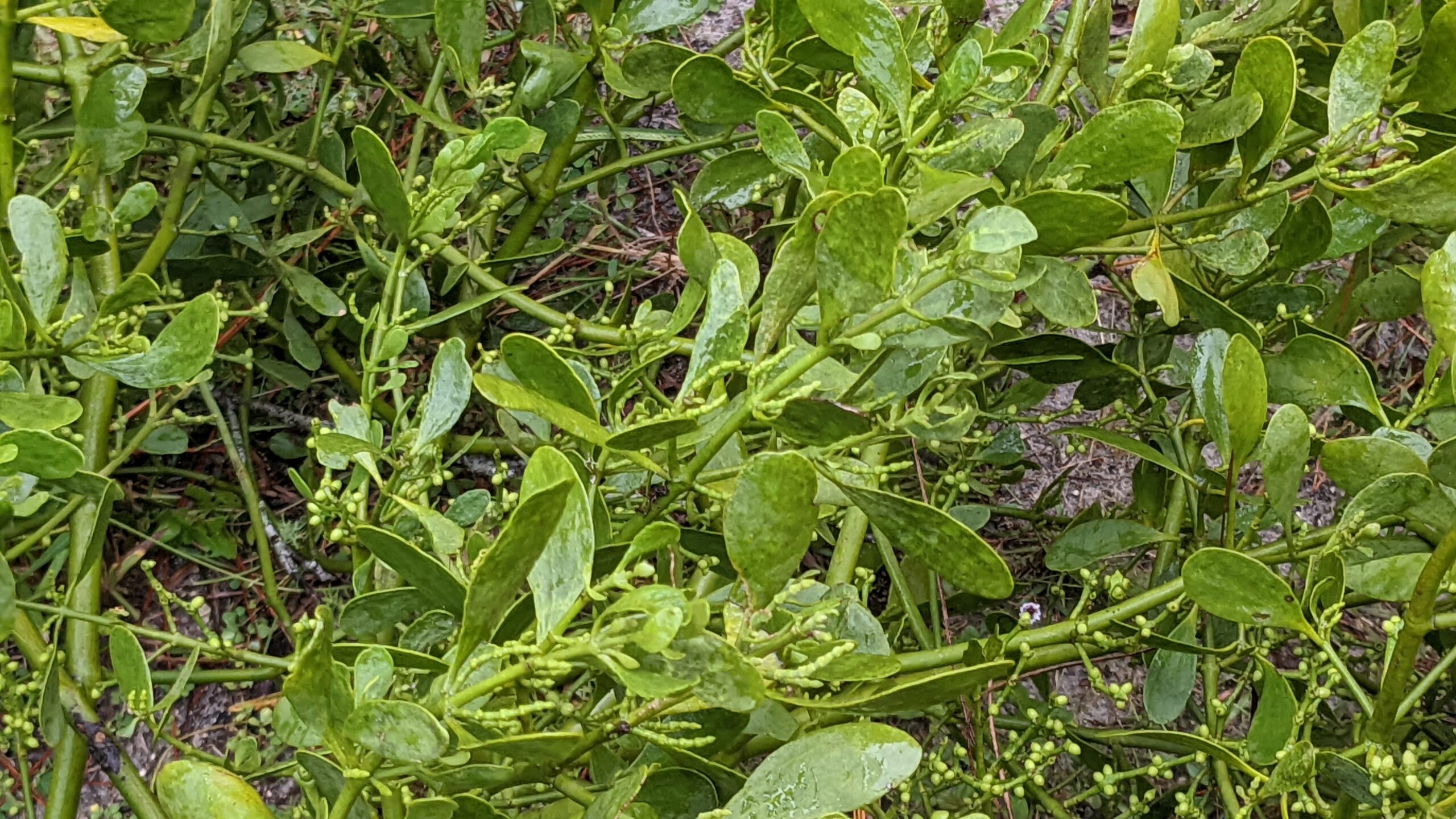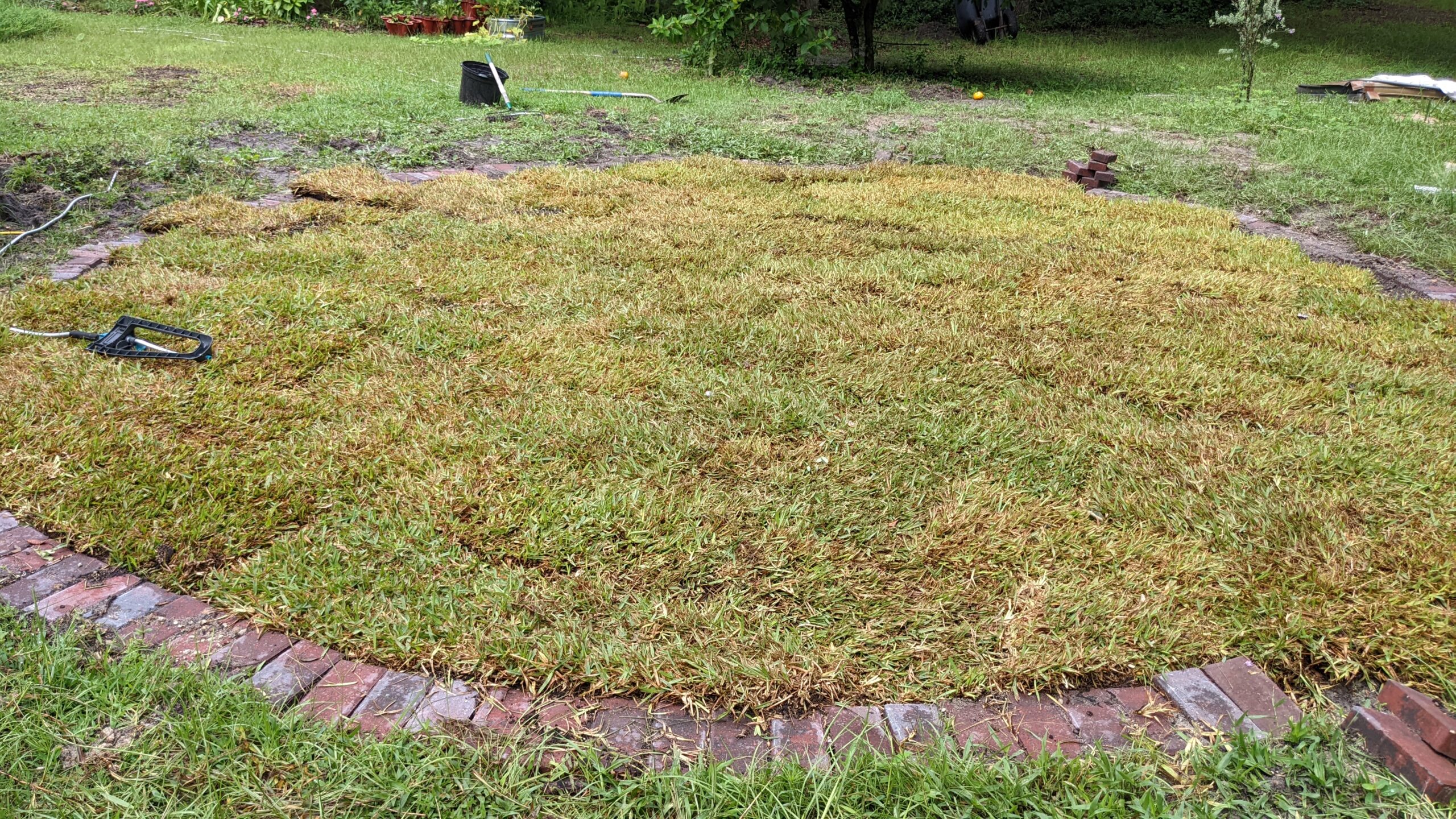If you search this website for the word “brutal,” I’m pretty sure it will net you a plethora of results. I use the word frequently, particularly when referencing our Florida summers. Plants here must be able to adapt to the intense sun, a distinct monsoon (summer) and a desert season (winter), occasional freezes, and vigorous competition from all kinds of invasive weeds that are very acclimated to our conditions. The first line of defense is to assure the right plant goes in the right place based on what is optimal for our zone and the sun, soil, and moisture conditions of the location in your yard.
Of course, assuring your plants get the correct amount of nutrients to meet their specific needs is another important aspect of having a successful garden. This is accomplished through providing them with the appropriate soil, water, fertilizer, and light. Healthy plants are better equipped to fight off pests, diseases, and adverse elements.
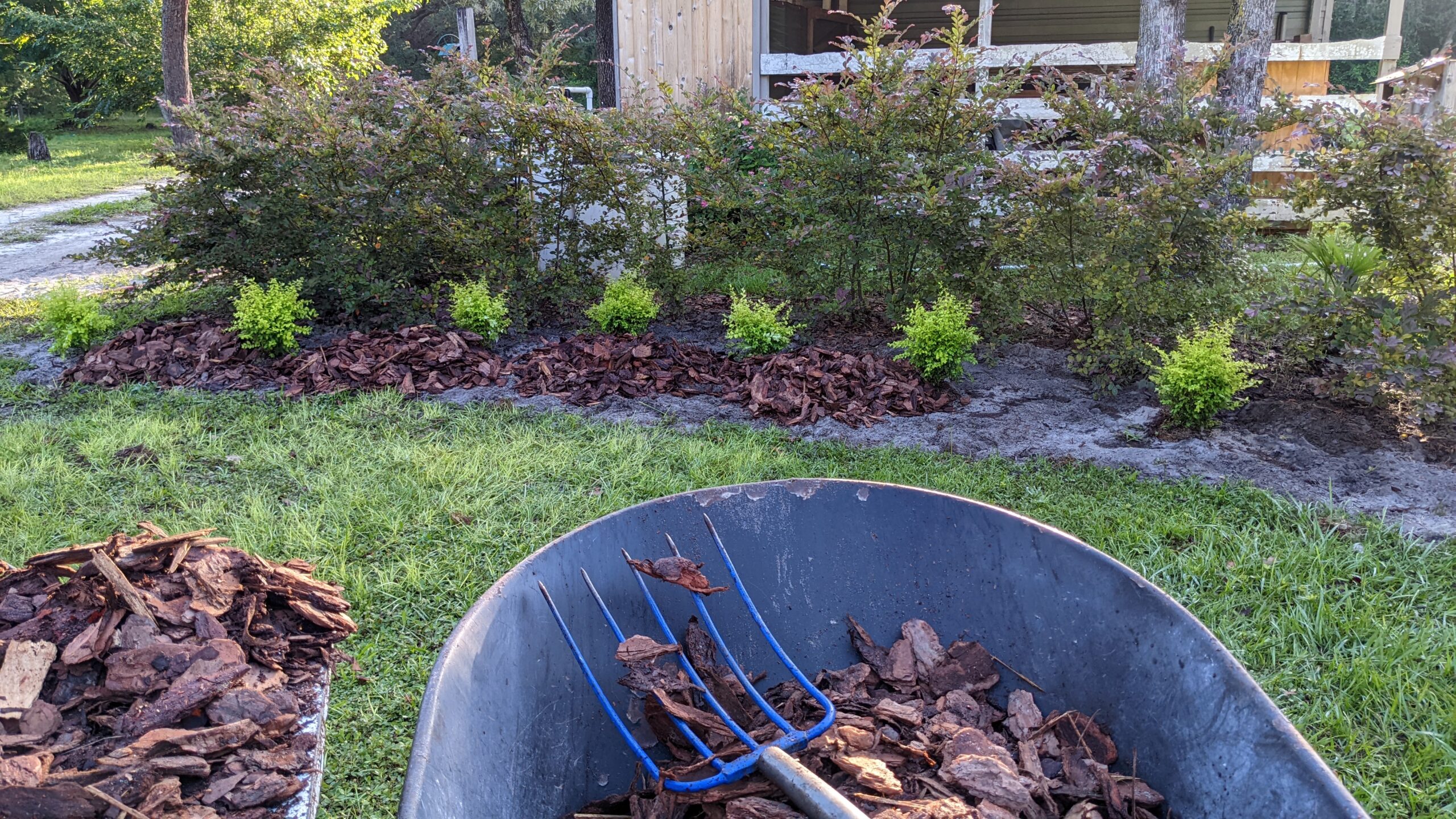
Anyone who’s walked on bare sand in Florida in the heat of a midsummer’s day can tell you it’s excruciating. While different parts of Florida have different types of soil, and indeed, you may have clay, silt, loam in various parts of your garden, but sand dominates in most yards. I have been introducing mulch and purchased garden soil into my yard for twenty years. Organic matter decomposed so quickly here, ultimately everything turns back to sand if it’s not replenished regularly. Even the soil in my wooded areas is predominantly sand despite the never-ending cycle of natural leaf debris shedding from the trees.
PROTECTION FROM THE ELEMENTS
This is where mulch comes into play. Not only is it important from an aesthetic perspective (who doesn’t love the look of fresh mulch in your garden beds?), it is crucial to raising healthy and vigorous plants. You can’t just dig a hole, plop a plant in it, and be done. Without mulch the sun will scorch the roots. Water will evaporate quickly. And weeds will germinate, filling the space and competing for nutrients.
- temperature moderation (keeps soil warmer in winter and cooler in summer)
- retains moisture so the plants don’t dry out saving water resources
- helps control weeds saving time on weeding chores and the use of herbicides.
ORGANIC NUTRIENTS
Organic mulch decomposes, providing additional nutrients to the plants, above and beyond what sand provides. When we purchase plants, they’re typically all grown in rich soil (except aerial plants, cacti, and succulents among others). I frequently, but not always, amend the hole with good garden soil by mixing it in with the surrounding dirt. By doing this the plant roots get a little “kick start” encouraging them to spread out, but it also acclimates them to the surrounding environment. Using natural, decomposable mulch (not stones and not rubber), helps renourish the soil structure and provide organic fertilizer.
BENEFICIAL ORGANISMS
Mulch also provides a more inhabitable environment for beneficial organisms. By retaining moisture and moderating soil temperatures (keeps the ground warmer in winter and cooler in the summer), this encourages more good fungi and bacteria and provides a place for beneficial insects to thrive and help aerate and fertilize the soil. It also reduces the need for watering.
PREVENTS SOIL SPLASH
An additional benefit of mulch is that it prevents soil splash. Rain can cause soil-borne diseases like blight and leaf spot to splash up on your plants, increasing the risk of infection. Even if there are no harmful organisms in the soil, plants with sand covering their leaves may be inhibited from optimal photosynthesis. It may also reduce aeration and inhibit the uptake of moisture through the leaves.
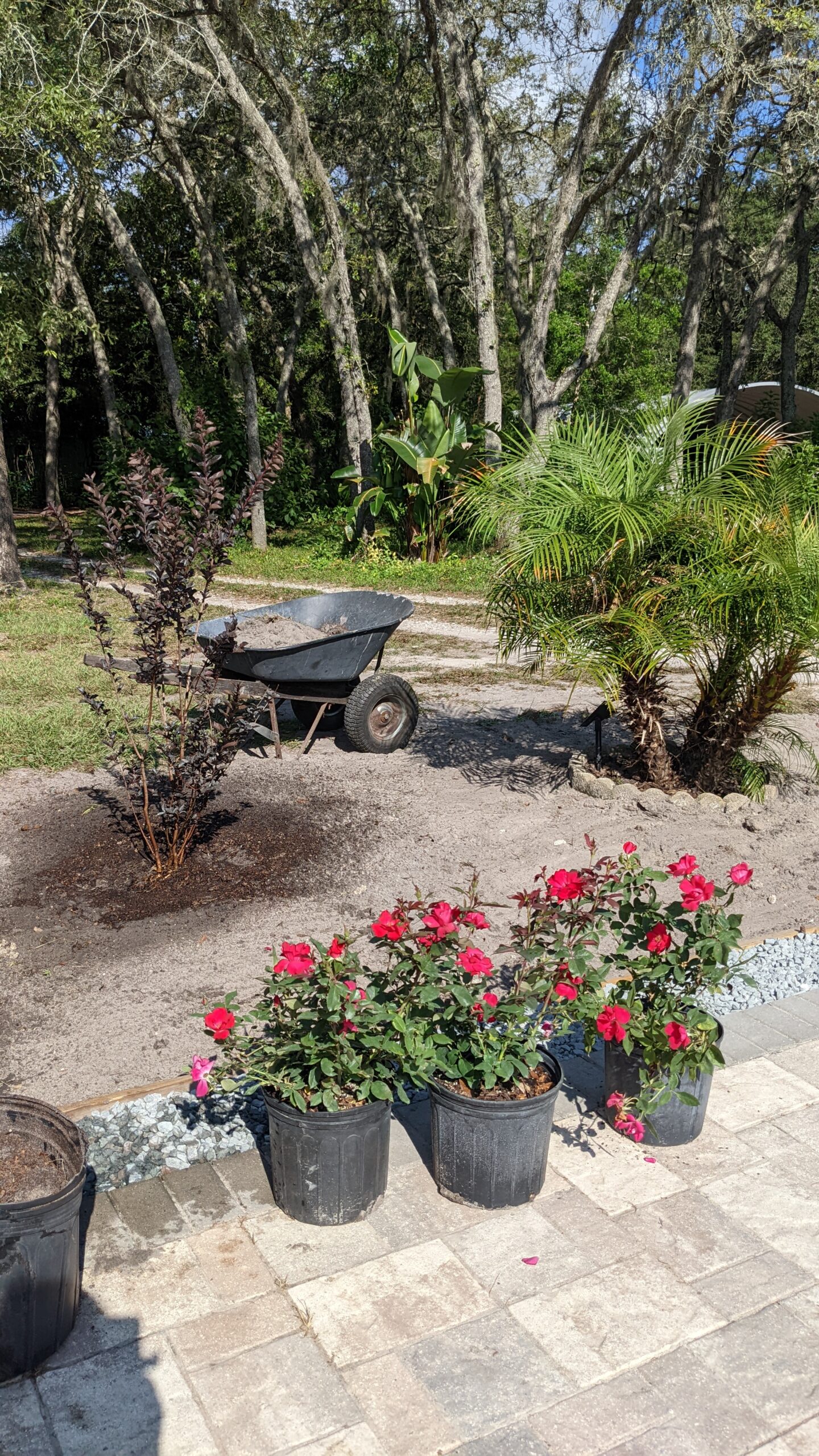
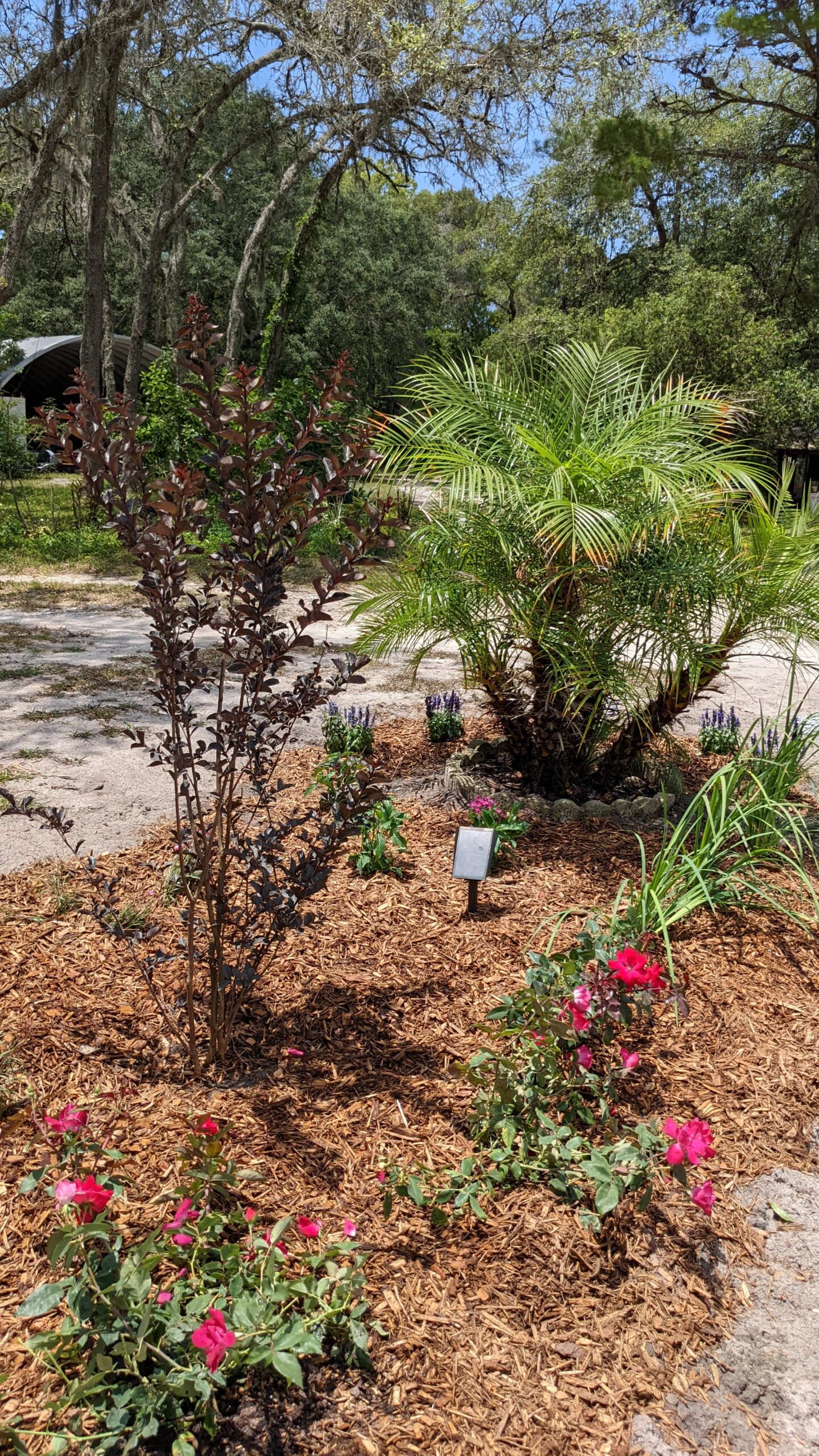
HOW TO APPLY MULCH
It is recommended to keep 2-3-inch-deep layer of mulch in plant beds. I find a pitchfork works the best to place the mulch down. A garden hoe is used to level it into place. Be sure to keep mulch away an inch or two from where the plant meets the soil, especially on plants prone to root rot from too much moisture. Do not build mulch up to the trunks and stems. How long the mulch lasts depends on the type of mulch used, and the environmental conditions of the location. In my sun garden, I have to replenish large pine bark mulch annually. If I don’t, it turns a faded gray, and bare patches start to emerge as it decays back into the earth. My garden looks so fresh and beautiful with a new layer of mulch… so much so that I regret not re-mulching sooner every time!
WHAT TYPE OF MULCH SHOULD I USE?
The University of Florida’s Institute of Food and Agricultural Sciences (IFAS) recommends using sustainable mulch of pine, eucalyptus, and melaleuca (an invasive species commonly known as paper-bark tree). I often rake up pine needs from my woods, recognizing that most people don’t have that luxury. IFAS recommends against using cypress mulch as it may not be sustainably harvested. I never use stones or rubber mulch. I also don’t use mulch with dyes.
WHERE SHOULD I GET MULCH?
I would add to that to use caution in getting free mulch from tree trimming services and the local solid waste facility. I had gone that route thinking, “Yay! Free mulch!” The problem is, sometimes it had a weird, noxious dump scent. Oftentimes, it was mixed with garbage. And nearly always it contained seeds from invasive plants. That is why I prefer to either gather my own mulch or purchase it from a local garden/landscaping center.
SHOULD I USE LANDSCAPE FABRIC BEFORE APPLYING MULCH?
I tend not to use landscape fabric in places where I have plants. Since I enjoy sowing seeds directly into the garden, the flowers need to contact the soil. A weed barrier prevents this. The cheap landscape fabrics tend to deteriorate. I do have one area of the moon garden where I placed professional grade landscape fabric. It does a pretty good job preventing weeds from popping up from below. However, over time, weeds will simply grow into the soil and mulch that invariably accumulates on top of the fabric. It is also sometimes a pain when I want to fill a hole with a plant using just a shovel. When I hit the fabric, I have to grab my garden knife and slice it away before I can did the hole.
I attempt to remove as many weeds and their seed heads, by hand before and after mulching. I don’t use herbicides in my landscape beds.
The bottom line is, plants need all the help they can get in Florida’s adverse conditions. Mulch is critically important to maintaining the health of your garden.
